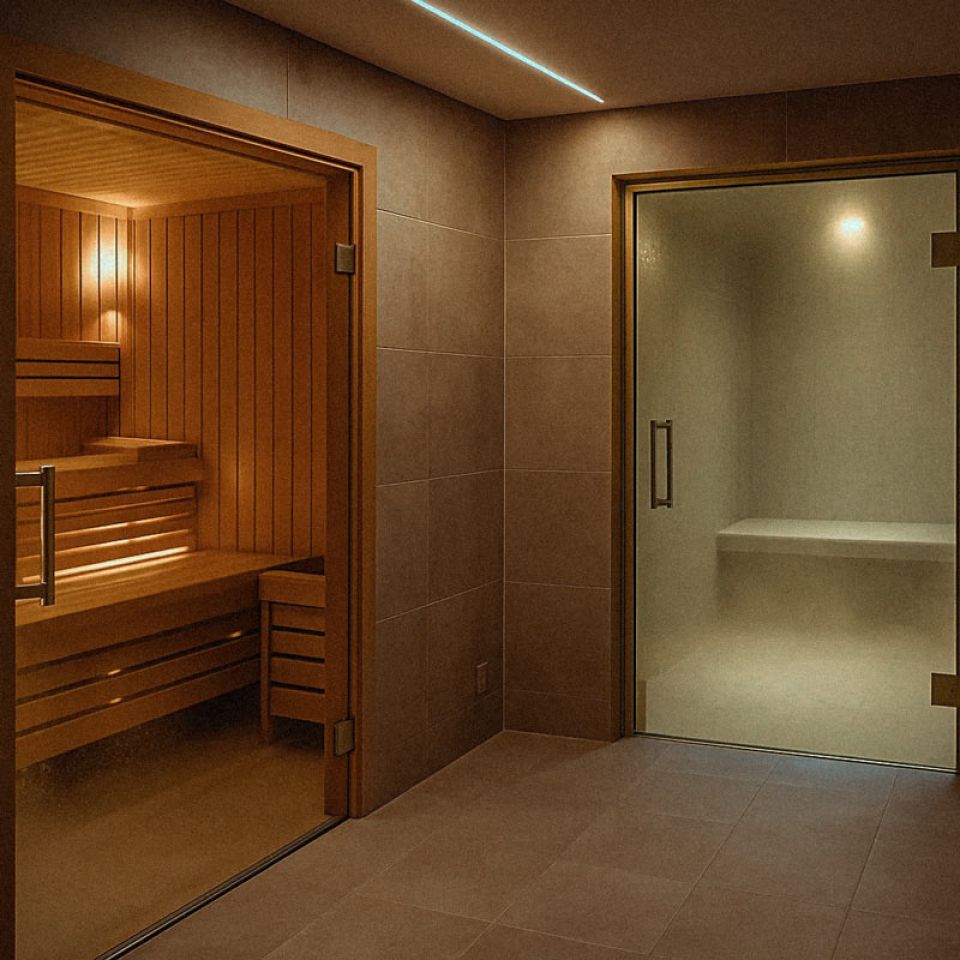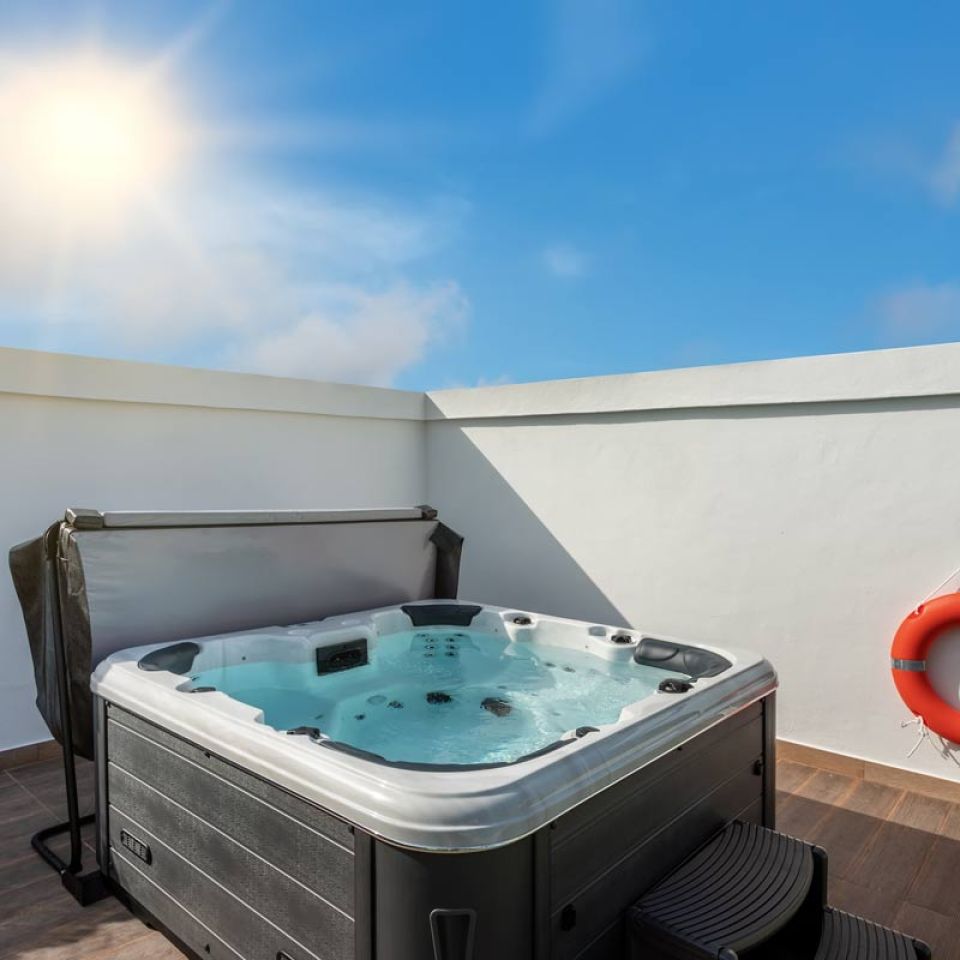Some owners love winter soaks; others prefer to close the spa until spring. Either way, the goal is the same: avoid freeze damage, avoid stagnant water problems, and make reopening simple. This guide explains when to keep your tub running, when to use a low-temperature economy mode, when to fully winterise, and how to do each safely.
First decision: keep it running, low-temp economy, or shut it down?
Option A - Keep it running (most common in the UK)
Modern spas are efficient, have freeze-protection modes, and can be enjoyed year-round with a good cover. If you’ll use the tub, or the property won’t be empty for long stretches, this is usually simpler. See BISHTA’s winter usage advice for UK owners: bishta.co.uk.
Option B - Keep it running on a low setpoint or in economy mode (a great middle way)
If you don’t plan to use the spa often but don’t want the faff of a full shutdown (followed by recommissioning come spring), set the temperature to the lowest allowable setpoint or enable your spa’s Economy/Rest/Auto-heat mode (naming varies by brand).
- Why it helps: circulating, lightly heated water protects pumps, seals, unions, and heaters by preventing long periods of stagnation and reducing start-stop thermal stress.
- Freeze risk drops: most modern control systems will circulate and apply heat automatically if sensors detect low temperatures; keeping water in motion also makes pipe freezing far less likely than in a drained-but-damp system.
- Running costs stay sensible: a tight, well-insulated cover (and an optional floating thermal blanket) plus a low setpoint trims energy use while keeping the system “alive”.
- What to check: confirm your model’s freeze-protection behaviour, filtration schedule, and how Economy/Rest modes heat (some only heat during filter cycles). See your owner’s manual: Hot Spring owners’ resources.
Option C - Fully winterise
Best if the tub will sit idle for weeks in freezing weather or the power may be off. This means draining completely, clearing water from plumbing, and protecting the shell and equipment until spring. Always follow your model’s owner’s manual for specifics: Hot Spring manuals hub.
If you’re keeping the tub running
- Use the cover religiously. A well-fitting, insulated cover reduces heat loss and keeps debris out. Locking straps are a safety essential, and ensure that the cover is in no danger of being blown open. See BISHTA safety tips: bishta.co.uk.
- Check chemistry weekly. Cold air, holiday bather loads, and wet weather can nudge water balance.
- Watch the weather. Your spa’s control system should circulate and heat automatically if temperatures drop, but verify freeze-protection in your owner’s manual: Hot Spring owners’ resources.
If you’re fully winterising: a step-by-step
-
Power down safely
Trip the spa’s RCD/GFCI and isolate power before you drain so no pump can run dry. Your manual shows the correct breaker. Example walkthrough: Hot Spring’s guide hotspring.com. -
Deep clean while it’s full
Add a line-flush product and run pumps per instructions to lift biofilm, then drain. This makes spring start-up easier and reduces risk from residues. -
Drain completely
Open the primary drain and any auxiliary drains. A small submersible pump speeds this up. -
Remove standing water from the pipes and jets
Remove filters. Use a wet/dry vacuum on each jet, suction fitting, filter well, and the drain to remove standing water from the pipes and jets. If you can access the equipment bay, briefly loosen the pump unions and vacuum there too, then refit hand-tight. This step is the real protection against freeze damage. Independent technique detail: swimuniversity.com. -
Open pump drain plugs if fitted
Many wet ends have small drain plugs on the face plate. Remove to let residual water out, then refit after everything is dry. Example walkthrough: spacare.com. -
Antifreeze? Only if your manufacturer approves
Some manufacturers suggest non-toxic propylene glycol as extra insurance in hard-to-purge lines. Others caution it can void warranties or be difficult to clean out. If you use it, it must be propylene glycol only (never automotive ethylene glycol), and you must flush thoroughly before refilling in spring. Check your manual and dealer advice for your model.
- Example allowing propylene glycol: Hot Spring guide hotspring.com.
- Example UK retailer caution: Penguin Spas note penguinspas.com. -
Dry the shell and fittings
Towel the shell, headrest recesses, and footwell. -
Cover and secure
Fit the main cover, strap it down, and consider a protective cap or bag in exposed locations to keep wind-driven rain and snow off the seam. Example UK cover caps: happyhottubs.co.uk. -
Occasional visual checks
After heavy snow or storms, brush off the cover, confirm straps are sound, and check the cabinet for damage.
What about standards and safety?
For domestic spas in the UK, BS EN 17125:2018 is the relevant product safety standard. It’s the UK adoption of the European EN 17125 - same text, UK cover. You can’t read the full document for free, but these open summaries explain the scope and exclusions clearly:
- EN 17125 scope summary (portable/inflatable hot tubs, exercise/spa pools, Scandinavian tubs, associated equipment): standards.iteh.ai
- EN 17125 overview with “not applicable to” list (e.g., public pools, mini-pools EN 16927, paddling pools EN 71-8, bathtubs, flotation tanks): genorma.com
Why this matters for UK readers: BSI adopts European Standards as British Standards, so EN 17125 is BS EN 17125 in the UK. Use these summaries for a shareable explanation of what the standard covers, then follow your manufacturer’s UK manual for model-specific steps.
Quick FAQs
Do I really need to winterise in the UK?
Not if you’ll keep using the spa and you can maintain power and water care. Many UK owners run tubs all winter with no issues when covered and maintained: bishta.co.uk.
Is antifreeze mandatory?
No. The key is removing water from the plumbing. Antifreeze may be recommended by some brands as extra insurance, but others discourage it. Check your owner’s manual and warranty terms before adding anything. Hot Spring example: hotspring.com.
Why all the fuss about leaving water in the tub?
Warm, under-sanitised water can allow bacteria like Legionella to grow. If you’re not circulating and chlorinating, drain it. CDC guidance: cdc.gov.
Handy links
- BISHTA winter usage advice — staying safe and comfortable through winter: bishta.co.uk
- Hot Spring UK manuals hub — model-specific do’s and don’ts: hotspringhottubs.co.uk
- Hot Spring winterising walkthrough — one manufacturer’s process, including propylene glycol notes: hotspring.com
- CDC: preventing Legionella from hot tubs — why stagnant water is a risk: cdc.gov
- EN 17125 scope summaries (free to read):
iTeh Standards: standards.iteh.ai
Genorma overview: genorma.com
Bottom line
If you’ll use your spa and can maintain power, keeping it running with a good cover is simple and safe. If you’ll use it rarely, the low-setpoint/economy route keeps systems protected and energy use sensible while dramatically reducing freeze risk by keeping water in motion. If you’ll not use it for weeks in freezing weather or power may be cut, fully winterise: drain, remove standing water from the pipes and jets, dry, and secure. Above all, follow your owner’s manual for model-specific steps, and don’t leave warm water sitting untreated.




